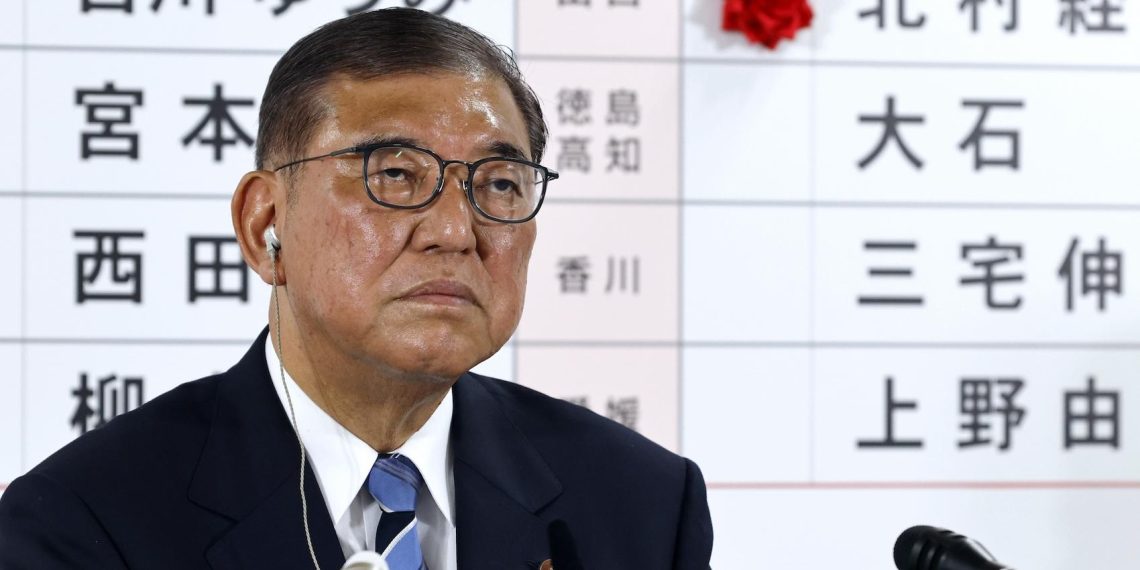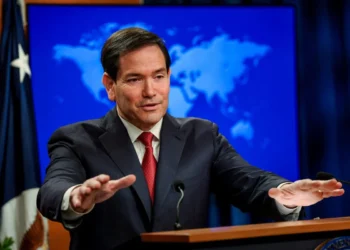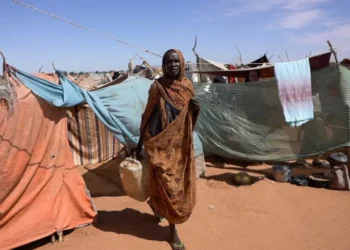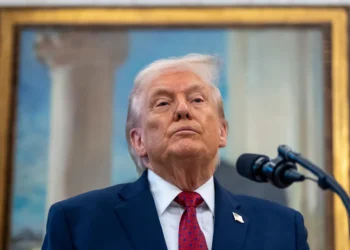TOKYO (Realist English). Japan’s ruling coalition led by Prime Minister Shigeru Ishiba has lost control of the upper house, according to projections by public broadcaster NHK, deepening political pressure on the embattled leader just weeks before a critical tariff deadline with the United States.
Preliminary results from Sunday’s election show the Liberal Democratic Party (LDP) and its coalition partner Komeito securing only 47 of the 125 contested seats, falling short of their target of 50. Of those, the LDP won 39. One seat remains undeclared.
Together, the LDP and Komeito now hold 122 seats in the 248-member upper house, down 19 from before the vote. The loss follows the coalition’s worst lower house result in 15 years during October’s elections, where the LDP also lost its majority — a defeat that exposed Ishiba to no-confidence threats and growing internal dissent.
Speaking late Sunday, Ishiba acknowledged the results, telling NHK he “solemnly” accepted the “harsh outcome.” In a separate interview with TV Tokyo, he stressed the stakes of ongoing trade talks with Washington: “We are engaged in extremely critical tariff negotiations with the United States… It is only natural to devote our complete dedication and energy to realizing our national interests.” Asked if he intended to remain as prime minister, he replied: “That’s right.”
Japan faces an August 1 deadline to finalize a trade agreement with the U.S., or risk punitive tariffs on key exports. Observers say Ishiba’s weakened position will complicate Tokyo’s bargaining stance.
The main opposition Constitutional Democratic Party is projected to finish second, while the far-right Sanseito party made a strong showing, winning 14 seats, up from just one previously. Founded on YouTube and once dismissed as a fringe movement, Sanseito ran on a “Japanese First” platform, warning of a “silent invasion” by foreigners. It now has enough seats to formally introduce legislation.
Sanseito’s rise reflects a broader voter backlash against the LDP’s economic and immigration policies. Opposition parties campaigning on tax cuts and welfare expansion capitalized on rising living costs — especially food inflation — to build momentum. “Polls show most households want a cut to the consumption tax to address inflation — something the LDP opposes,” said David Boling of Eurasia Group. “Opposition parties seized on it and hammered that message home.”
The LDP has argued for fiscal restraint, mindful of Japan’s fragile bond markets and the burden of the world’s largest public debt. But analysts warn that without a parliamentary majority, the government will be forced into compromises that could further strain fiscal credibility. “The budget will continue to expand,” said Yu Uchiyama, a political scientist at the University of Tokyo. “Overseas investors’ evaluation of the Japan economy will also be quite harsh.”
Sanseito, which gained attention during the pandemic for spreading anti-vaccine conspiracies and railing against “global elites,” has increasingly pulled nationalist rhetoric into the mainstream. Its hard line on immigration resonates with parts of the electorate unsettled by Japan’s demographic transformation.
“I am attending graduate school but there are no Japanese around me. All of them are foreigners,” said Yu Nagai, a 25-year-old voter in Tokyo’s Shinjuku Ward. “When I look at the way compensation and money are spent on foreigners, I think that Japanese people are a bit disrespected.”
Japan, now the world’s oldest society, recorded a foreign-born population of 3.8 million last year — the highest in its history. What remains to be seen is whether Sanseito can follow the path of Europe’s populist right and institutionalize its influence — or fade after a protest-driven surge.


















